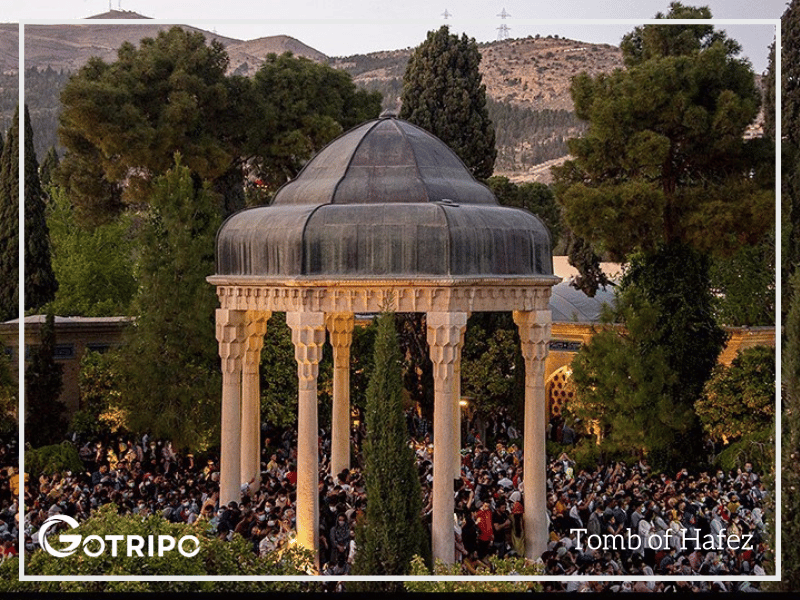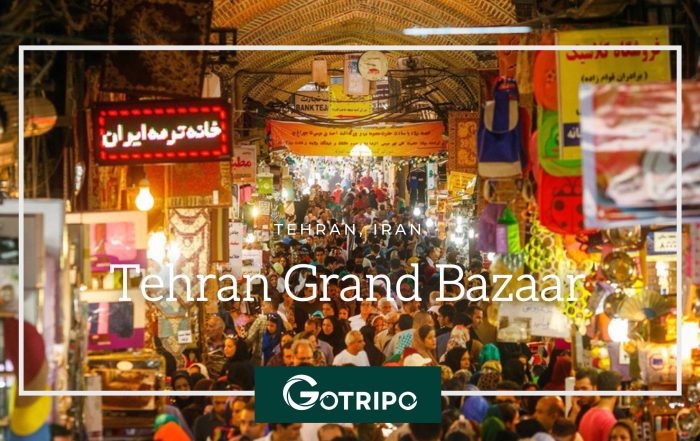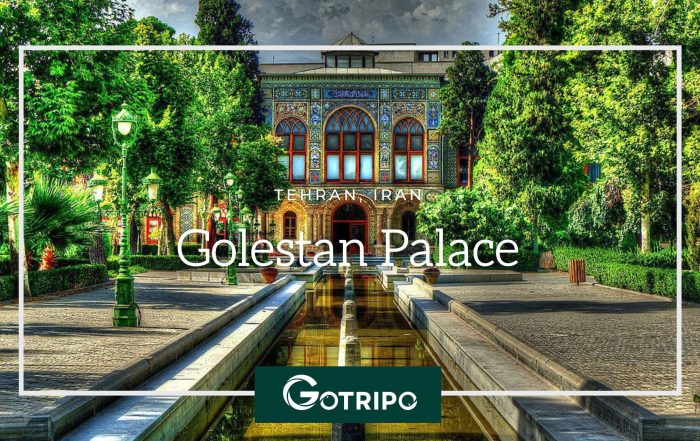Tomb of Hafez in Shiraz
Nestled in the poetic city of Shiraz, the Tomb of Hafez is more than just a grave—it’s a sacred haven where words dance with wind and time bows in reverence. Known locally as Hāfezieh, this place has become a sanctuary not just for Iranians, but for global wanderers seeking soul and silence.
From its elegant Persian architecture to the timeless verses etched in stone, the tomb honors the life and legacy of Khwāja Shams-ud-Dīn Muhammad Hāfez-e Shīrāzī, a 14th-century mystic and poet whose words continue to stir hearts centuries later.
Why the Tomb of Hafez Captivates Millions?
Visitors don’t come only to witness stone and structure—they come to feel. To feel the heartbeat of Persian culture. To sense serenity in its gardens. And to read poetry aloud under moonlight, hoping for guidance from the heavens. The Tomb of Hafez isn’t just a place—it’s a poem carved into earth and sky.

Life of Hafez
The poet behind the tomb lived during a tumultuous era filled with political shifts and spiritual awakenings. Hafez was born in Shiraz around 1315 AD and spent most of his life here. Though not much is known with certainty about his life, legend has it he memorized the Qur’an by listening to his father teach it—hence the name Hafez, meaning one who has memorized.
His verses oscillate between divine intoxication and earthly love, between rebellion and surrender. It’s said he addressed both lovers and the Beloved in ways that blurred boundaries between human passion and divine ecstasy.

Read more: Niavaran Palace Historical Complex
Where Is the Tomb of Hafez?
Set within the Musalman Gardens of Shiraz, the tomb rests beneath a canopy styled after Zoroastrian fire temples. The location was not randomly chosen—it mirrors the balance Hafez sought between nature and the mystical.
This spot has become one of Iran’s most visited places—yet despite the crowd, it feels personal. Maybe because each visitor brings their own longing, and Hafez has a verse for every one of them.

Architecture and Garden Design
Designed by the French architect André Godard in the 1930s, the tomb harmonizes Islamic, Persian, and Sufi influences. Surrounded by flowerbeds, flowing water, and cypress trees, it’s a spatial metaphor for paradise.
The tombstone itself lies beneath a domed pavilion, shaped like a dervish’s hat. Beneath it, a single poem is engraved: “With the blessings of your verses, the heavens bow down.” Subtle yet celestial.
A Symbol of Persian Identity
Ask any Iranian, and they’ll tell you: Hafez is in their blood. His poems are read at weddings, funerals, New Year (Nowruz), and sometimes, just because. His tomb stands not just as a memorial, but as a reminder of Persian resilience and richness.
He’s taught in schools. Quoted in parliament. And invoked in everyday banter. There’s poetry in Persian politics, and often, it starts with Hafez.

Fal-e Hafez: Fortune Telling with Poetry
Every Persian knows the ritual—open Hafez’s Divan, read the first poem your eyes land on, and interpret your fate. This is Fal-e Hafez, a beloved form of bibliomancy that locals practice especially during Yalda Night (winter solstice) and Nowruz.
People whisper their wishes, flip the book, and let Hafez speak. Amazingly, it often feels like he knows exactly what you’re going through.
Best Time to Visit Tomb of Hafez
While the tomb is open year-round, spring and autumn are magical. The flowers bloom, the air smells of orange blossoms, and the gardens shimmer under soft sun. Evenings are mesmerizing, with the tomb glowing under golden lights and distant music wafting through the trees.
Experiencing the Tomb at Dusk
Arrive at sunset and you’ll witness an unspoken ritual: locals reciting Hafez softly, lovers holding hands in silence, and travelers reflecting by the moonlit pond. The sounds? Crickets and poetry. The view? Otherworldly.

Divan of Hafez
This collection of ghazals (lyrical poems) is found in almost every Iranian home. With themes of wine, love, hypocrisy, and truth, it reads like a spiritual roadmap with winding alleys of meaning.
The lines are open to interpretation. And therein lies the magic: no two readings feel the same.
FAQs
What is the Tomb of Hafez?
It is the final resting place of the 14th-century Persian poet Hafez, located in Shiraz, Iran.
Is the Tomb of Hafez open to tourists?
Yes, it is a major cultural and historical site, open to both local and international visitors.
What is Fal-e Hafez?
It’s a Persian tradition of divination using Hafez’s poetry, where people ask questions and interpret his poems for guidance.
Is the site religious or secular?
While not a religious shrine, it holds deep spiritual meaning, especially among Sufis and poetry lovers.
Can I read Hafez in English?
Absolutely! There are many high-quality translations by scholars like Gertrude Bell and Daniel Ladinsky.
What makes the garden so special?
Its layout mimics Persian paradise gardens with symbolic elements like water channels, cypress trees, and roses—each holding poetic significance.
Conclusion
The Tomb of Hafez is more than history—it’s harmony. It bridges the past with the present, the divine with the mundane, and the poetic with the palpable. Whether you go as a traveler, a lover, or a seeker, you leave changed.
To visit the tomb is to feel something ancient whisper your name. And long after you’ve left, the verses echo in your soul like the fragrance of a rose in bloom.
news via inbox
Subscribe to receive the best offers, travel guides, and hot deals!








